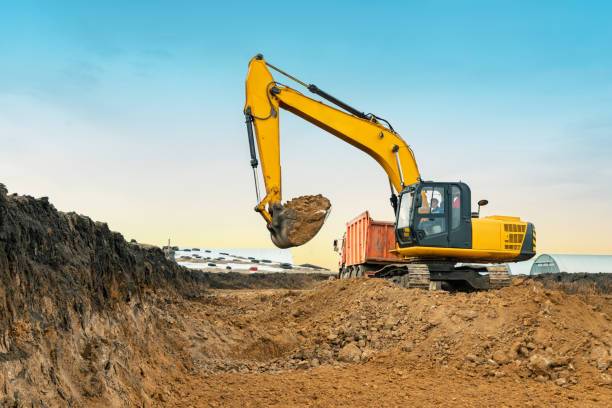
The quarrying sector places a high priority on maintaining a safe working environment. Injury-causing factors are frequently basic operational ones, such as inadequate walkways or scaffolding, poor housekeeping, a lack of training, and operator weariness. The ten straightforward safety recommendations below may help you avoid loading and carrying accidents in the quarry industry.
Make use of seatbelts.
At quarry locations, seat belts are a crucial component of safety. When utilized appropriately, they keep operators seated and aid in keeping them inside the roll-over protection structure (ROPS) in the case of a collision or tip-over.
Wear personal protective equipment at all times.
The first line of defense against occupational dangers for plant operators is personal protective equipment (PPE) such as a helmet, eye protection, high visibility vest, steel toe safety boots, gloves, hearing protection, and task-appropriate breathing equipment. Operators should speak with site safety personnel to ensure they have the PPE needed for their position.
Prioritize operator visibility
Maintaining a visual check on the job site is crucial, as well as alerting management and other operators to any unsafe situations or visibility risk areas. Poor visibility can result in injury or death and damage to equipment and infrastructure. Ensure that the blast sites and transport roads are kept in good condition and moistened to lessen dust and filth.
Adhere to the required site training
All relevant staff should be certified and given the go-ahead to work on the site as per legal requirements and site-specific training. Before starting work, all staff should undergo site-specific safety training, such as fall prevention and confined space training.
Respect the right-of-way for mobile equipment.
Quarry traffic poses a risk to both site managers and visitors; thus, it’s crucial to keep all directional and traffic signs maintained and functional. Both employees and guests must get training on proper traffic flow and site restrictions.
Performing walk-around inspections
Even though they only take a short while, walk-around inspections are one of the most acceptable ways to stop mechanical issues with plant equipment and eliminate safety dangers. Operators must be aware of the necessity to complete the inspections, and supervisors must provide them with enough time to conduct in-depth analyses.
Prevent falling and slipping
Making sure you have solid footing when using climbing gear is a simple precaution that is easy to ignore. Operators must be watchful and cautious when maneuvering on or near loose material and entering and exiting machinery.
Ensure that vehicles are kept far enough apart.
Never should production come at the expense of safety. When operating machinery on construction sites, operators must keep a safe distance from other vehicles.
Train consistently.
Before beginning work at a quarry site, new operators must receive thorough and appropriate training. Before using any machine, operators must ensure they are familiar with the manufacturer’s operation and maintenance handbook for Kor Pak machine parts.
Identify the dangers presented by benches and high walls.
Because the environment changes quickly during excavation, it is crucial to recognize bench and high wall hazards. It is critical to daily operations to notify the following shift of any changes to bench or high wall conditions and to locate and remove any loose material before beginning work.












